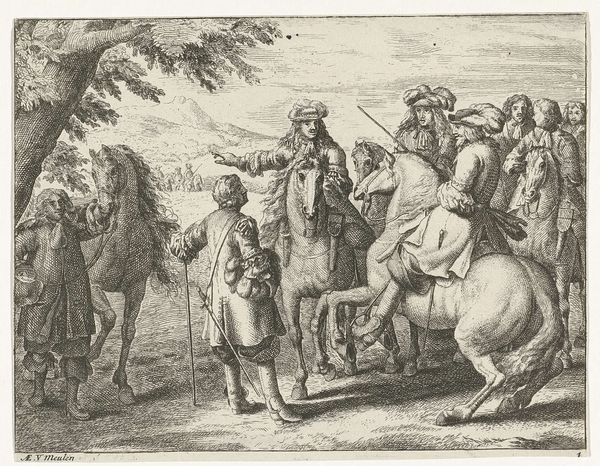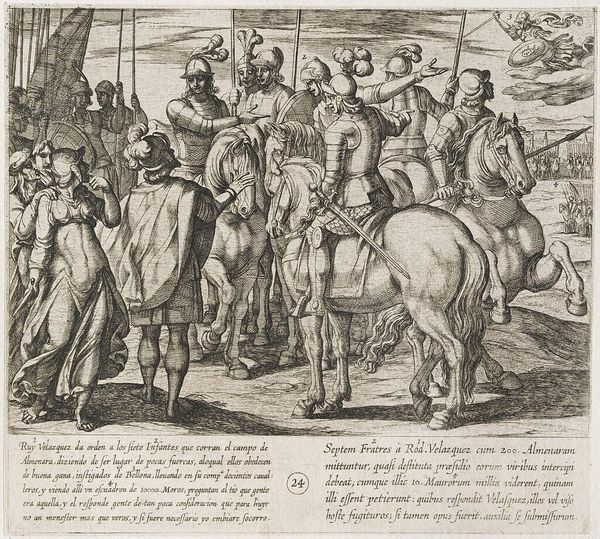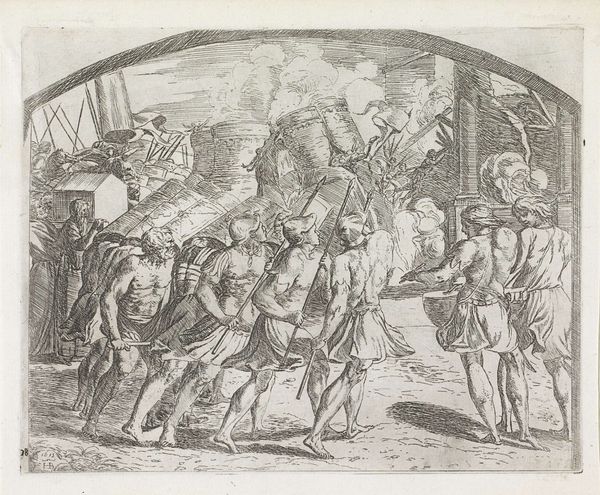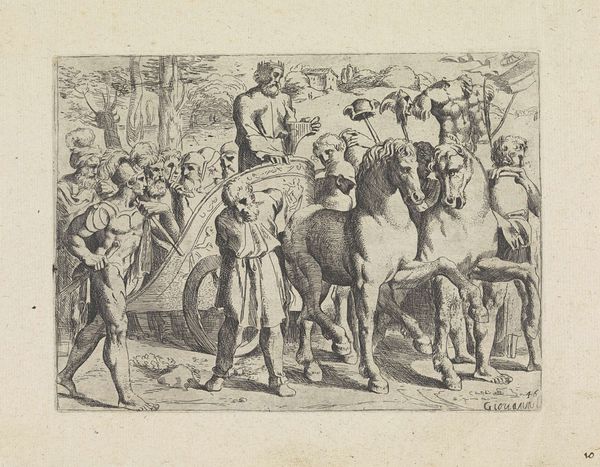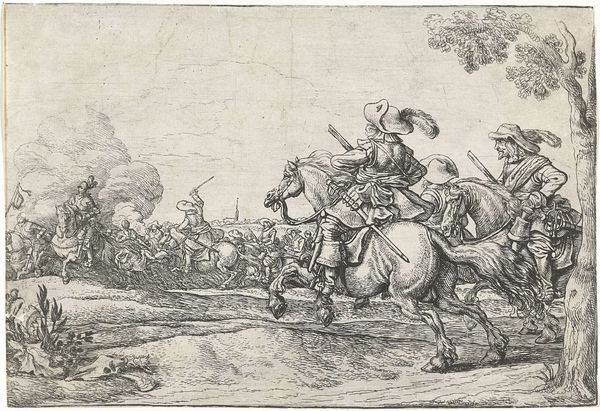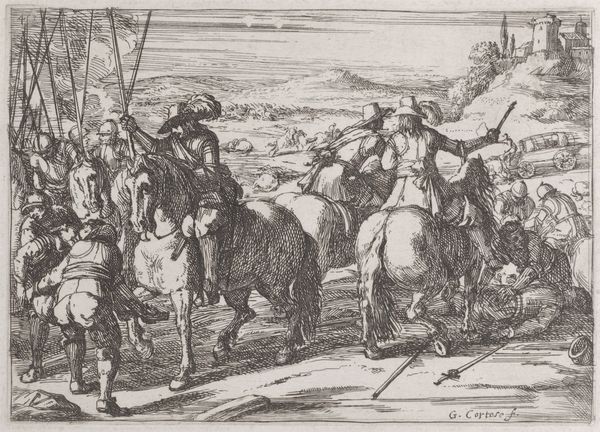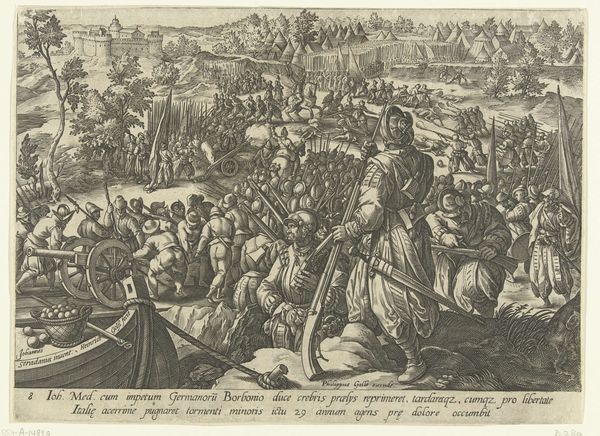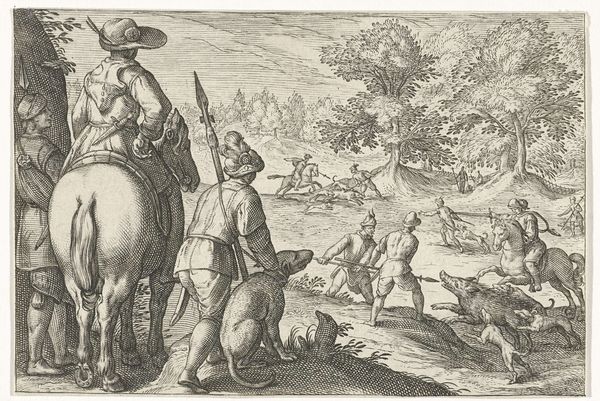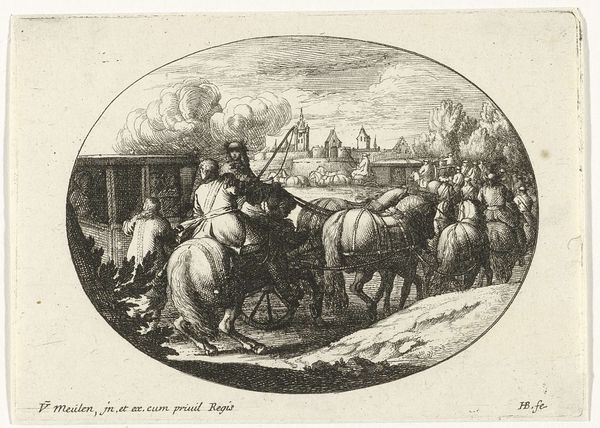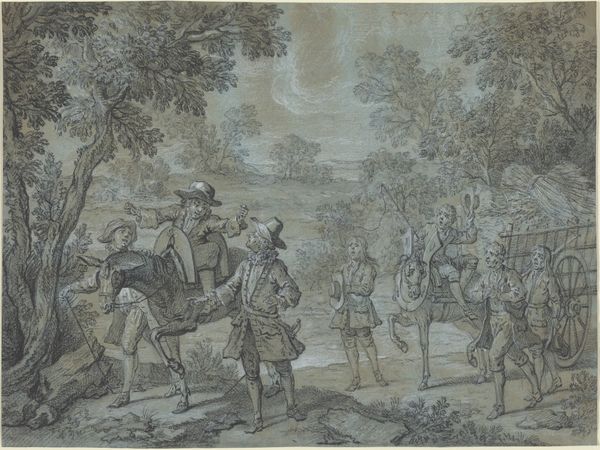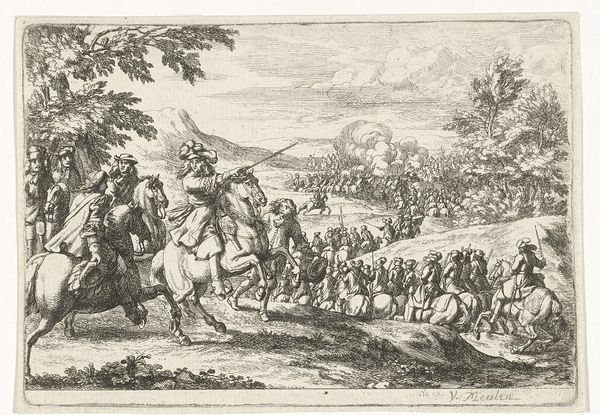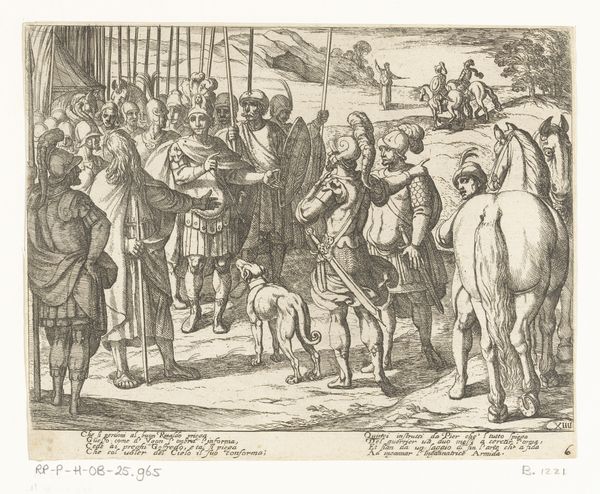
print, engraving
#
baroque
# print
#
figuration
#
line
#
history-painting
#
engraving
Dimensions: height 155 mm, width 180 mm
Copyright: Rijks Museum: Open Domain
Editor: This is Orazio Borgianni's "David keert in triomf terug naar Jeruzalem," from 1615, an engraving. It feels dynamic and full of motion, yet constrained by the linear style. What elements of the composition strike you most? Curator: The intricate linework immediately captures my attention. Notice how Borgianni utilizes varying densities of lines to create areas of shadow and highlight, thus suggesting depth and volume. Observe particularly the musculature of the horses and the folds in the garments; the textures are quite palpable through purely graphic means. Editor: The figures do seem very defined despite the relatively flat perspective. Is that contrast intentional? Curator: Indeed. There is a certain tension arising from the somewhat flattened space, typical of printmaking, juxtaposed with the rather Baroque, three-dimensional modelling of the figures. The deliberate organization of the picture plane into distinct zones, marked by shifts in tonal values, underscores its compositional rigor. Consider also the strategic use of hatching to articulate forms and textures; it exemplifies Borgianni’s technical mastery. Editor: That’s a great point, I hadn’t considered the effect of hatching. What about the symbolic elements of Baroque? Curator: We might analyze its formalism more than its themes here. Ask yourself: how is line deployed? How does Borgianni exploit tonal values? These formal qualities, in themselves, articulate the print's distinct character and inherent properties. Editor: So, focusing on the how and what of the art instead of why. I can definitely appreciate the technique more now, focusing on the line work gives a great deal more insight than I first understood. Curator: Precisely, attending to its structure provides profound interpretive insight.
Comments
No comments
Be the first to comment and join the conversation on the ultimate creative platform.
